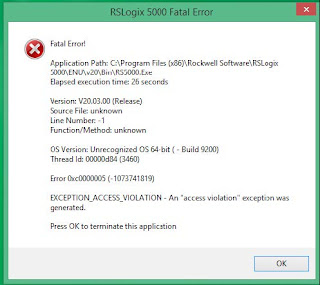Understanding the Differences Among Industrial Ethernet Protocols
The rapid adoption of Ethernet on the plant floor over the past decade underscores the need for more production information for better decision-making and the need to simplify networks for easier access and maintenance. But just as there have been “wars” between the varying fieldbus protocols over the years, a similar posturing over the capabilities of the different protocols persists in the Ethernet arena.
To help you make sense of the main differences between six of the major industrial Ethernet protocols, we turn a spotlight on CC-Link IE, EtherCAT, Ethernet/IP, Ethernet Powerlink, Profinet, and Sercos III.
CC-Link IE
- CC-Link IE is gigabit speed industrial Ethernet.
- It is an inherently deterministic network that uses token passing as the mechanism to guarantee deterministic performance.
- No Ethernet switches are required in the basic topology.
- The protocol is based on ISO model IEEE.802.3 Ethernet at the physical layer.
- CC-Link IE protocol fits at the transport network layer. It is not a TCP/IP or UDP-based network. This is one of the reasons that it’s a separate protocol in order to guarantee deterministic operation out of the box.
- Frame format of the data is the Ethernet frame. Within the Ethernet frame is a CC-Link IE frame with header and data information.
- CC-Link EE works with Mitsubishi Electric’s MES Interface IT hardware appliance to move shop floor data to enterprise level and avoid the need for gateway PCs.
EtherCAT
- The master does not require a special card to run EtherCAT, and each slave device or node on the network has an ASIC or FPGA chip inside that implements the entire protocol. The slave doesn’t need a microcontroller or random access memory, which means frames can be read and written as data goes through the network at a line speed of 100 Mb/s with no switches built in.
- EtherCAT’s fieldbus memory management unit uses logical addressing so that each slave device knows where to find its data in the frame, regardless of its physical location. One read-write cycle is capable of talking to all the devices without a great deal of CPU overhead on the controller side.
- EtherCAT supports multiple scan rates and multiple acyclic data exchange rates on the same network for use in multiple industrial automation processes including motion, I/O, condition monitoring, and data acquisition.
- There is no separate backplane and, therefore, no conversion needed from EtherCAT to another protocol to the I/O level. This is due to use of LVDS (low voltage differential signal) — a third physical layer in addition to CAT 5 and fiber used to pass the EtherCAT packets directly through all the I/O terminals so that each I/O terminal can be its own independent node on the network.
- EtherCAT can synchronize down to the nanosecond level on a standard PC with no special fieldbus cards for timing.
EtherNet/IP
- EtherNet/IP is a control network designed to address enterprise communication rather than focusing on segments across a machine or line. This enterprise design reportedly allows for easy integration with other devices, as well as network traffic from other protocols and Web servers.
- Safety aspects are addressed through CIP (common industrial protocol) Safety, which allows safety devices to coexist with standard control devices on the same CIP network, with or without a safety PLC. In this environment, safety sensors can operate alongside variable speed drives, safety controllers with standard PLCs and proximity switches. Regardless of the combination of devices used, the integrity of the safety control loop cannot be affected by any of the standard control devices.
- CIP Motion addresses synchronization in motion. CIP Motion, as part of EtherNet/IP, combines the requirements of deterministic, real-time, closed loop motion control with standard, unmodified Ethernet, and complies with Ethernet standards, including IEEE 802.3 and TCP/IP. EtherNet/IP with CIP Motion technology enables multi-axis, distributed motion control through application profiles designed to allow position, speed and torque loops to be set within a drive.
Ethernet Powerlink
- Ethernet Powerlink is a broadcast-based system, meaning that the network doesn’t have to transmit the packet through every single station. When the system transmits back, every node transmits the packet back as a broadcast. This makes it possible to multiplex nodes, which means the node doesn’t have to transmit its information back on every single scan, allowing for network optimization and high-speed synchronization.
- By using a slot protocol, where each node has a certain slot time on the network and passes data back to the master in a slot manner, this illuminates any collisions on the system. This gives Ethernet Powerlink fast and predictable cycle times and also allows for the removal and reconnection of nodes to the network without interrupting the cycle.
- Redundancy is built in for ease of network recovery whether using a ring, star or daisy chain topology. If any part of network is disconnected, the system will self recover and report back that the network has gone down.
- Ethernet Powerlink can be implemented via free download from Sourceforge.net. It’s based on C, so it’s transportable to controllers or PCs using a standard Ethernet port. With that in place, any system can be connected to a Powerlink network and control Powerlink nodes.
- The synchronization is around 100 nanoseconds with a guarantee of minimal jitter.
Profinet
- Profinet uses standard, unmodified Ethernet media, but does not use TCP/IP to transmit realtime
- information. When real-time data is being sent, those two layers are skipped. Diagnostic information,
- however, is accessed over TCP/IP.
- Bumpless redundancy — meaning that each node sends its message out in both directions around the ring (when using a ring topology) to ensure at least one message will always get through.
- In depth diagnostics are available from the I/O rack level down to a module in that rack.
- Profinet supports real time I/O for motion control as well as machine-to-machine, controller-to-controller or peer-to-peer types of communication.
- Profinet allows for integration of other buses (including Foundation Fieldbus, Interbus, ASI, HART, DeviceNet, and others) via proxies, allowing for maintenance of legacy nodes.
- ProfiEnergy is a vendor- and device-neutral data interface based on Profinet that permits a coordinated, centralized shutdown of devices during idle times. This means that individual components or entire subsections of a plant can be switched off automatically when not in use without the aid of external hardware.
- Since there is no explosion-proof industrial Ethernet, Profinet leverages Profibus PA (the process automation version of Profibus), which can be installed in such an atmosphere and then brought in through a proxy to Profinet.
Sercos III
- Sercos III uses a tightly controlled time synchronization signal emitted from a master control in the system once for every update cycle, providing nanosecond determinism across the network. The time base is a phase-lock loop for deterministic control, allowing for the synchronization of serially connected servo drives, CNCs, and motion controls.
- Each message sent from the control contains a master sync telegram for hard real-time function. This also places fewer burdens on the host processors, freeing them up for tasks such as running control algorithms and machine programs.
- The collective telegram approach underlying Sercos III means that each device places its input data on common answer telegrams. During the remaining time in the cycle, which for a typical application can be 80 percent or more of the available bandwidth, any standard Ethernet protocol can be transmitted over the network.
- Bumpless, single fault redundancy means that Sercos III nodes are specified to detect broken links in less than 25 microseconds and immediately re-route telegrams back in a double line configuration.
- No telegram data is destroyed in a communication cycle over Sercos, thereby allowing direct cross communication of data between slaves without the CPU burden or time delay that a re-transmission of data by a master would impose.
- Sercos III can be integrated with EtherNet/IP, allowing integrators to mix Sercos III, EtherNet/IP and TCP/IP components within a single machine on a single cable.







Comments
Post a Comment